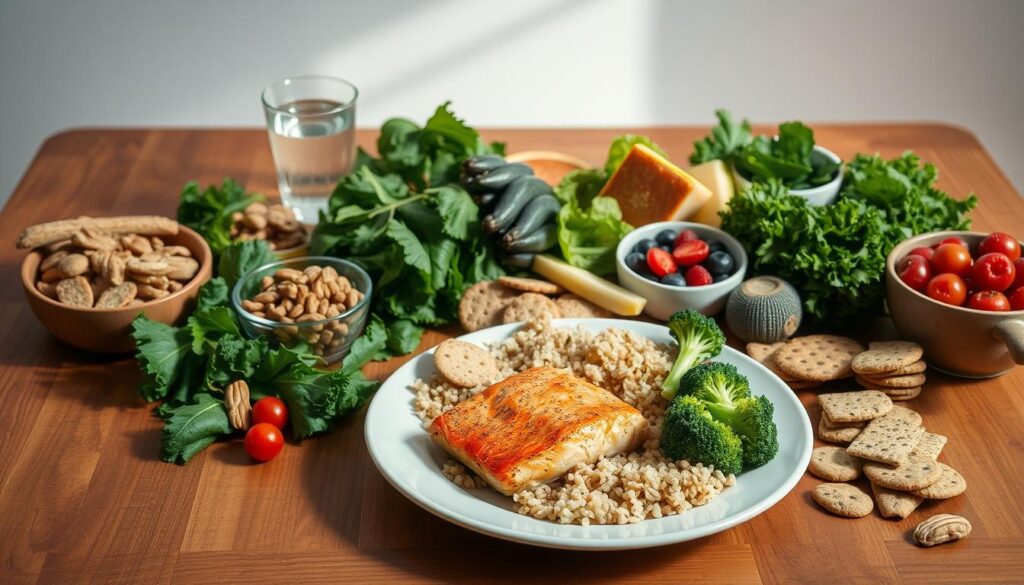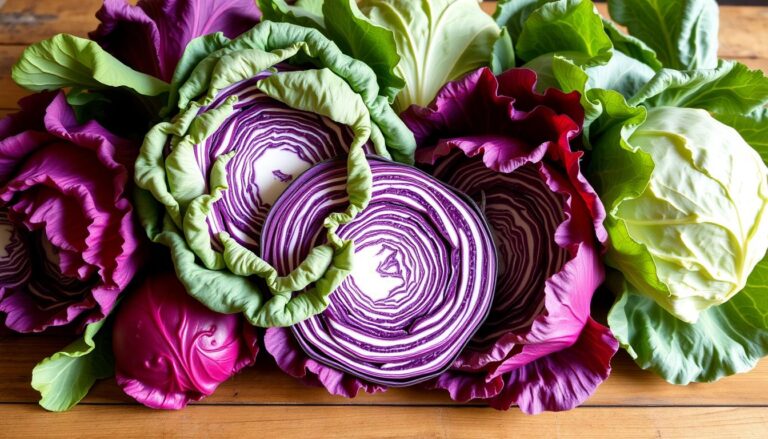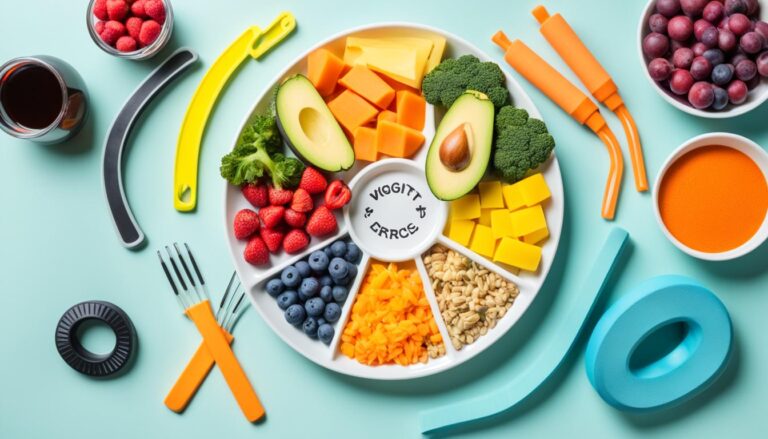About 34.2 million Americans or 10.5% of the population have diabetes. It’s key to know about a diabetic diet. A good diet can control blood sugar and lower health risks.
So what foods are best for people with diabetes? They can help manage the condition and boost health.
Key Takeaways
- A balanced diet is key for managing diabetes and lowering health risks.
- Diabetic foods should be full of nutrients but low in fat and calories.
- A diabetic diet helps control blood sugar and improves health.
- People with diabetes should eat less added sugars and saturated fats.
- A healthy diet can lower heart disease and vision loss risks.
- Eating a variety of foods, like fruits, veggies, and whole grains, is vital.
- Regular meals and a set eating schedule help keep blood sugar stable.
A diabetic diet is more than just avoiding certain foods. It’s about making smart food choices. By understanding the importance of a balanced diet, people with diabetes can manage their condition better. They can also improve their health.
Approximately 88 million adults in the U.S. have prediabetes. A well planned diabetic diet can prevent type 2 diabetes.
Understanding Diabetes and Nutrition Basics
Creating a diabetic meal plan is key for managing diabetes. A good diabetic diet plan keeps blood sugar levels in check. This is vital for those with diabetes or prediabetes. The National Institute of Diabetes and Digestive and Kidney Diseases says carbs affect blood sugar the most. So, tracking carbs is important for diabetes management.
Eating healthy can also lower risks of heart disease and some cancers. The American Diabetes Association recommends eating half your plate with nonstarchy veggies. A quarter should be lean protein, and the last quarter carbs. This balance is essential for a personalized diabetic meal plan.
- Choosing whole grains, which contain essential vitamins and minerals such as B vitamins, magnesium, iron, and manganese, and are also a good source of fiber.
- Including heart-healthy fish at least twice a week to obtain omega-3 fatty acids, which may prevent heart disease.
- Aiming for no more than 200 milligrams mg of cholesterol per day and limiting sodium intake to no more than 2,300 mg per day.
What is a Good List of Food for Diabetics?
A good list of food for diabetics includes whole, unprocessed foods. These foods are full of nutrients and help keep blood sugar levels stable. The American Diabetes Association suggests a diet rich in fruits, vegetables, whole grains, lean proteins, and healthy fats.
Healthy foods for diabetics include:
- Non-starchy vegetables, such as broccoli, carrots, and spinach
- Lean protein sources, such as chicken, beans, and tofu
- Whole grains, such as brown rice, quinoa, and whole-wheat bread
- Healthy fats, such as avocado, nuts, and olive oil
It’s key to watch portion sizes and balance carbs, protein, and fat in meals. A diabetics doctor can tailor a meal plan to fit your needs and goals.
The Glycemic Index Your Guide to Smart Food Choices
Managing a diabetic diet means knowing about the glycemic index GI. It scores foods from 0 to 100 based on how fast they raise blood sugar. Foods with a low GI are digested slowly, which is good for a food for diabetics meal plan.
The GI falls into three groups: low 1-55 medium 56-69 and high 70 and above. Eating low to medium GI foods helps keep blood sugar stable. For instance, cantaloupe has a GI of 65-70 making it a smart choice for diabetics.

Here are some key points to consider when selecting foods based on their GI:
- Low GI foods: whole grains, non-starchy vegetables, and most fruits
- Medium GI foods: cantaloupe, honeydew, and whole wheat bread
- High GI foods: white bread, sugary cereals, and heavily processed foods
Using the glycemic index in your meal planning helps you make better choices. It supports managing your diabetic diet and promotes a healthy lifestyle. Always talk to a healthcare professional or a registered dietitian for tailored advice.
Power Packed Vegetables for Blood Sugar Control
A good diabetic meal plan should have lots of non-starchy veggies. These are full of fiber, vitamins, and minerals. The U.S. Department of Agriculture USDA says we should eat 2 to 4 cups of veggies every day.
Broccoli, spinach, and bell peppers are great for blood sugar control. They’re low in carbs but high in fiber. This helps manage blood sugar. Eating these veggies can help people with diabetes stay healthy and avoid serious problems.
Carrots and cucumbers are also good for a diabetic diet. Carrots help you feel full, and cucumbers can lower blood sugar. Tomatoes are full of lycopene, which is good for the heart and can fight cancer. Adding these veggies to your diet can make you healthier and lower your risk of serious health issues.
Green beans, mushrooms, and okra are also great choices. They add important nutrients and fiber to your diet. A balanced diabetic diet with lots of veggies can help manage diabetes and improve health. By eating well, people with diabetes can live better lives and avoid serious health problems.
Protein Sources That Support Diabetic Health
Choosing the right protein sources is key for a diabetic diet. The American Diabetes Association says lean meats, fish, and plant-based options help control blood sugar. A balanced diabetic diet should have many protein sources for good health.
Good protein choices include lean meats like chicken and turkey, and fish like salmon and tilapia. Plant-based options like lentils and tofu are also great. These food for diabetics can help manage blood sugar and provide important nutrients.
Beans and lentils are also good for a diabetic diet. They are full of protein, fiber, and other nutrients. Adding different protein sources to meals helps people with diabetes manage their condition and stay healthy.
Smart Carbohydrate Choices for Diabetics
Managing diabetes means making smart choices about carbs. Carbs affect blood sugar levels the most. Foods like whole grains, fruits, and veggies are good because they’re full of fiber. This helps keep blood sugar in check.
Adding whole grains like brown rice and whole wheat bread to your diet is smart. Non-starchy veggies like lettuce and broccoli are also great. They’re low in carbs and high in fiber, which is good for your blood sugar.

- Whole grains like brown rice, quinoa, and whole wheat bread
- Non starchy vegetables like broccoli, tomatoes, and green beans
- Fruits like apples, blueberries, and strawberries
Choosing the right carbs and eating whole foods can help control your blood sugar. This can also lower your risk of serious health problems.
Healthy Fats and Their Role in Diabetes Management
Managing diabetes through diet often focuses on carbs and protein. But, healthy fats are also key. They help lower cholesterol and improve insulin sensitivity. The National Institute of Diabetes and Digestive and Kidney Diseases says healthy fats like omega-3s, nuts, and seeds are beneficial.
The Dietary Guidelines for Americans suggest 20% to 35% of calories should come from fats. Less than 10% should be from saturated fats. For a 2,000-calorie diet, aim for 45 to 78 grams of fat daily. Good sources include:
- Omega-3 fatty acids in fatty fish like sardines, recommended by the American Diabetes Association.
- Nuts and seeds, like almonds and chia seeds, rich in healthy fats.
- Avocados, which can lower blood sugar and insulin levels when eaten at breakfast.
Adding these healthy fats to your diet can boost your health and lower risk of complications. It’s important to balance carbs, protein, and fats for good blood sugar control and health.
Creating a Balanced Diabetic Meal Plan
A good diabetic meal plan is key to managing blood sugar and staying healthy. The American Diabetes Association says a balanced plan should include foods from all groups. This means fruits, veggies, whole grains, lean proteins, and healthy fats. Each person’s plan should fit their unique needs and calorie needs, based on age, weight, and how active they are.
Focus on whole, unrefined carbs like whole grains, low-sugar fruits, and veggies. These help control blood sugar and aid digestion. Foods high in fiber, like veggies, fruits, whole grains, nuts, and legumes, also help manage blood sugar and cholesterol.
Plus, they make you feel full. Protein sources, like lean meats, seafood, eggs, low-fat dairy, and plant-based options, help with feeling full and provide important nutrients.
Here are some key parts of a balanced diabetic meal plan:
- Non-starchy vegetables, such as leafy greens, broccoli, and bell peppers
- Whole grains, such as brown rice, quinoa, and whole-wheat bread
- Lean proteins, such as chicken, turkey, and fish
- Healthy fats, such as nuts, olive oil, and avocados
By sticking to a structured diabetic meal plan, people with diabetes can better control their blood sugar. They can also keep a healthy weight and lower the risk of serious health problems. It’s important to work with a healthcare provider to create a diet plan that’s right for you.
Foods to Avoid with Diabetes
Managing diabetes means watching what you eat. A good diabetic diet helps keep blood sugar in check. Foods with added sugars, saturated fats, and sodium can harm your health.
The American Diabetes Association suggests checking nutrition labels. This helps track carbs and calories. It’s key for managing diabetes.
People with diabetes should avoid simple carbs, saturated fats, and sugars from sweets. Hidden sugars in foods like cereals and pastries are also a concern. 
Here are some food for diabetics tips:
- Choose whole grains, like 100% whole wheat bread, for more fiber.
- Go for low-fat dairy, like low-fat Greek yogurt, to help insulin.
- Avoid foods high in sodium, saturated fats, and added sugars.
By avoiding bad foods and making smart choices, diabetics can manage their condition better. A balanced diabetic diet with whole foods helps control blood sugar. This supports overall health.
Timing Your Meals for Optimal Blood Sugar Control
Creating a diabetic meal plan with regular, balanced meals helps control blood sugar. The National Institute of Diabetes and Digestive and Kidney Diseases says eating regularly is good for blood sugar. A good diabetic diet plan should have equal parts protein and carbs, plus whole grains for fiber.
Meals should be eaten every 4 to 5 hours. Snacks between meals and before bed can help. Drinking enough water and sleeping well also help keep blood sugar stable.
Following a structured diabetic meal plan and diabetic diet plan can improve blood sugar control. It’s key to work with a healthcare provider to create a meal plan that fits your needs and goals.
Working with Your Healthcare Provider on Diet Choices
Creating a personalized diabetic diet is key for managing diabetes. The American Diabetes Association says working with a healthcare provider or dietitian is vital. They help craft a meal plan that fits your needs and helps control blood sugar.
A good diabetic diet balances whole grains, lean proteins, fruits, and veggies. It also avoids foods and drinks with added sugars.
Healthcare providers guide you in making smart food for diabetics choices. They consider your lifestyle, preferences, and health goals. They also teach you how to check blood glucose levels and adjust your meal plan.
By teaming up, you can make a meal plan that manages your diabetes. This reduces the risk of serious health problems.
When planning your diabetic diet, choose whole grains like 100% whole-wheat bread, brown rice, and oatmeal. Opt for lean proteins like poultry, fish, and legumes. Limit foods high in added sugars, saturated fats, and sodium.
Following a well-thought-out diabetic diet and working with your healthcare provider can lead to better blood sugar control. This improves your overall health.
Conclusion Building a Sustainable Diabetic Friendly Diet
Creating a diabetic diet that’s both healthy and lasting is essential for managing your diabetes. You’ve learned that choosing the right food for diabetics can greatly affect your blood sugar levels and overall health. By sticking to whole foods and avoiding added sugars, unhealthy fats, and too much sodium, you can make a diabetic meal plan that’s good for you.
Being consistent is key to a diabetic-friendly diet. Work with your healthcare provider to find a diet that suits you. There are many tasty, healthy foods to try. Don’t hesitate to experiment to find what’s best for you. With the right attitude and commitment, you can manage your diabetes and live a healthier, happier life.





